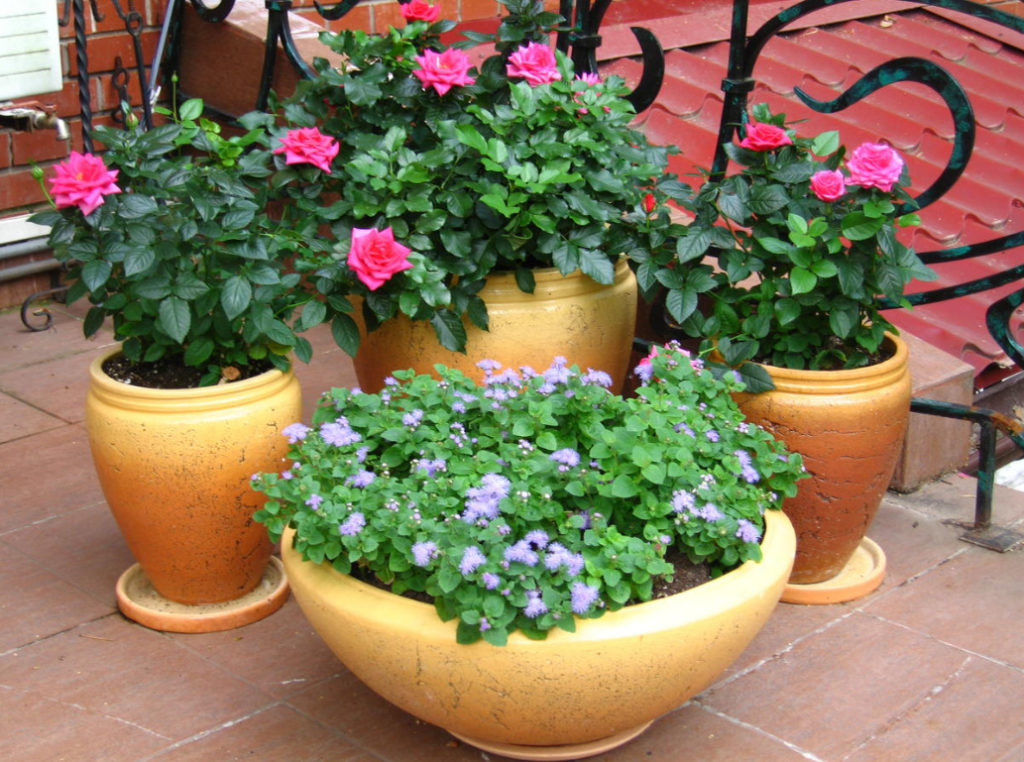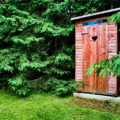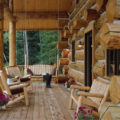Recently, an integral part of the garden and the house has become, on the one hand, a very ceremonial, representative, and on the other — a cozy, secluded place, which was called a patio.
What is a patio and why is it needed
Although the history of the appearance of such an open courtyard is associated with the ancient Greek peristyle (peristylos— surrounded by columns), the traditions of using all kinds of podiums, small enclosed areas near the house have become favorite methods of organizing space for landscape designers from different countries. This is very convenient if a small area near the house is used for different purposes.
A beautiful tiled floor or stone paving, thoughtful landscaping, stylish fencing or a green fence around the entire patio is an elegant option for a large house. The architecture of the building itself, the surrounding landscape and the nature of the owners of the house in each case dictate the stylistic solution of the patio design.
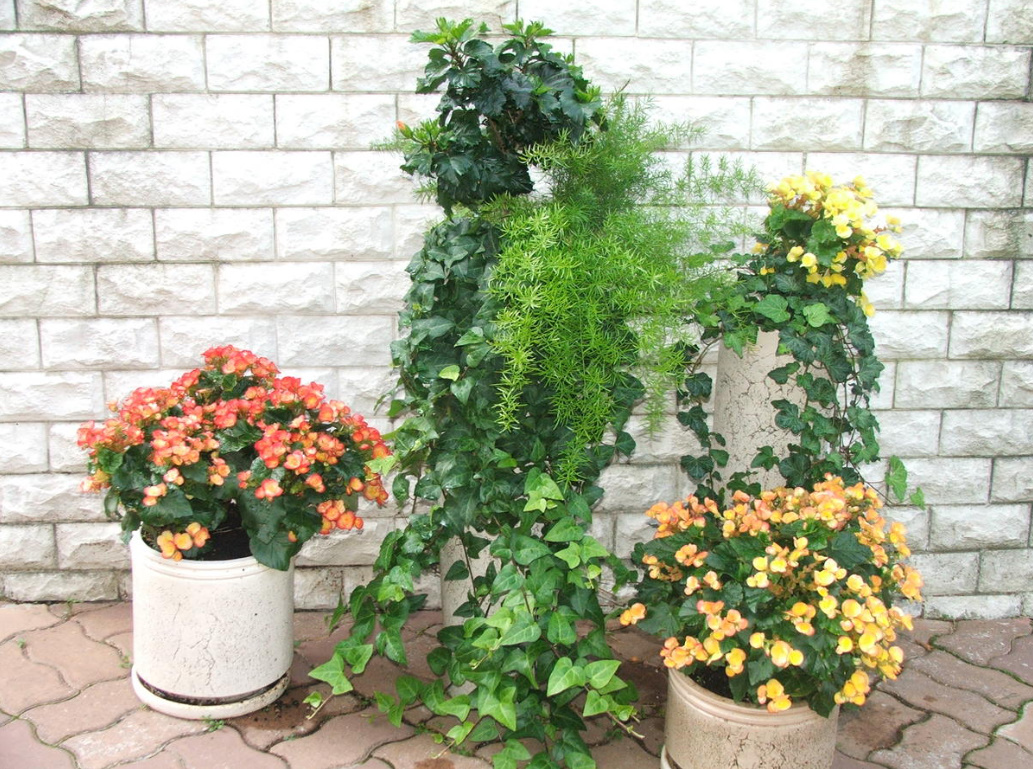
Even in a cool climate, a patio is a good opportunity to expand the space of the room, set the table not in the house, but next to the trees, and enjoy the aromas of the garden. The patio can become a favorite place for the owners of the house and their guests, where the closest friends gather on warm evenings, so it should be cozy, colorful, stylish.
Choosing plants for an English patio
If the priorities were given to the English style, then the assortment of plants for the design of containers should correspond to the chosen direction. Of course, the throne seat is reserved for the Rose Queen. Its beauty, perfection of form and wonderful fragrance, sung by poets, immortalized by artists on canvases, create a special mood of peace and tranquility in this corner of relaxation. In addition to the fact that the “queen of flowers” has long been used in the decoration of rooms, drinks and all kinds of delicacies were prepared from its petals and seeds. This page of her biography is very appropriate in this situation.
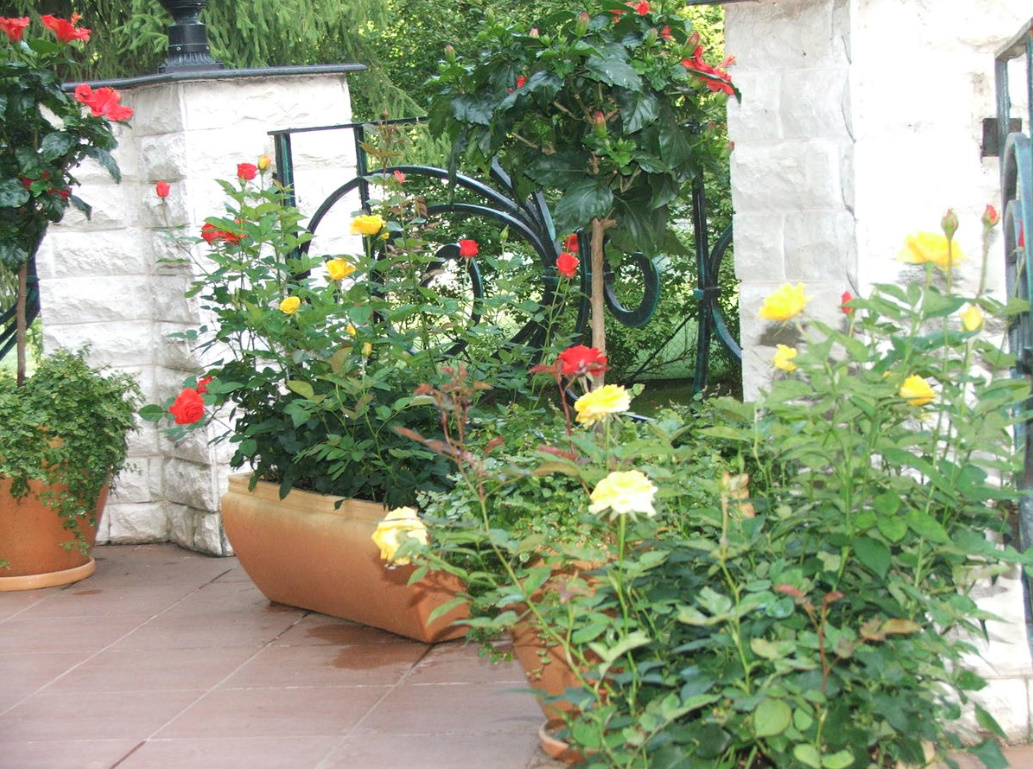
Roses of a wide variety of shapes — bush, stem, curly — create extraordinary opportunities for their use in the design of the garden. Both small bushes and large rose bushes delight with the most delicate fragrant flowers of various colors, contrasting with the prickly stem and beautiful green foliage.
To the delight of rose lovers, small varieties and miniature versions of garden roses have been created, suitable for growing in containers. They even got a name — patio roses. Although these roses are called miniature, but among them there are “giants” and “dwarfs”. The lowest of the miniature in normal conditions reach a height of 25 cm, the highest — 45 cm. The flowers can be either small, no more than 2.5 cm in diameter, or “large” — up to 5 cm.
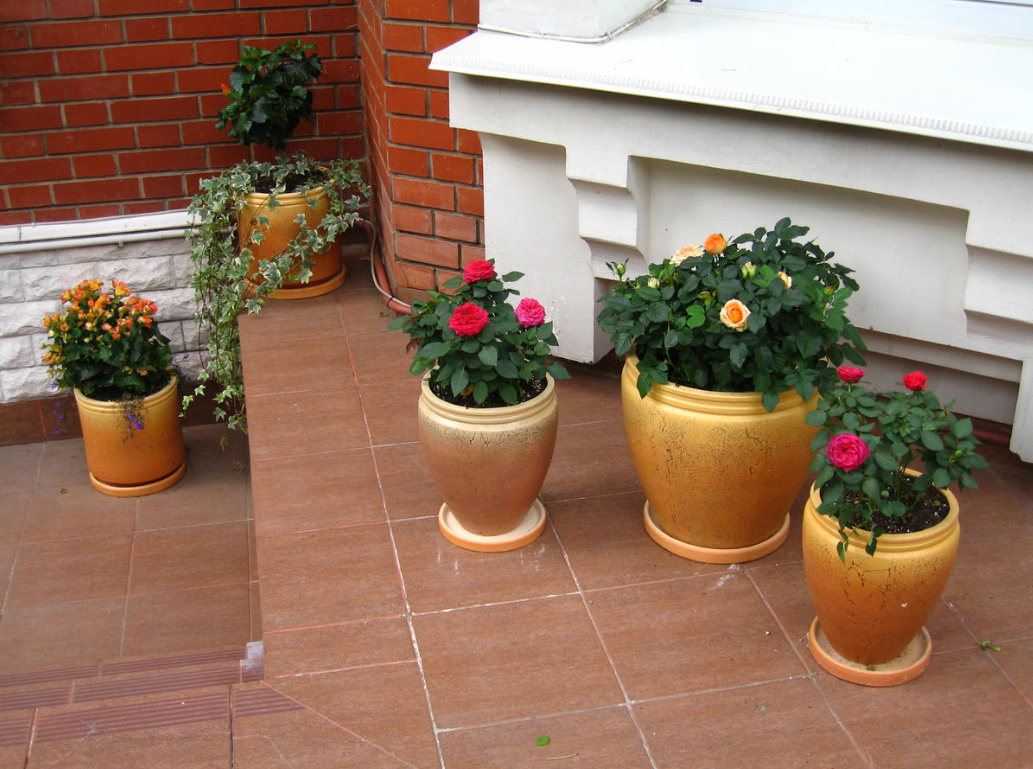
The mix, created from different varieties of miniature roses and planted in long containers, is a wonderful decoration of the patio along its perimeter, and groups of roses with large flowers play the role of accent spots.
A close relative of park roses is hibiscus, or Chinese rose, a symbol of family well—being, happiness. In the subtropics of Southeast Asia, China and India, a variety of roses was created from local wild species with white-pink, red and yellow flowers, which has occupied its rightful place in Europe since the XVIII century. The stem shape of hibiscus combined with ficus pumila is a real decoration of the patio.

Begonia looks no less majestic in the “royal suite”. As befits “courtiers”, tuberous bush and ampel begonias, along with ivy and asparagus, are located on different tiers of the patio — patio. Bright, delicate tones of begonia inflorescences in any weather bring a sunny, warm, friendly mood.
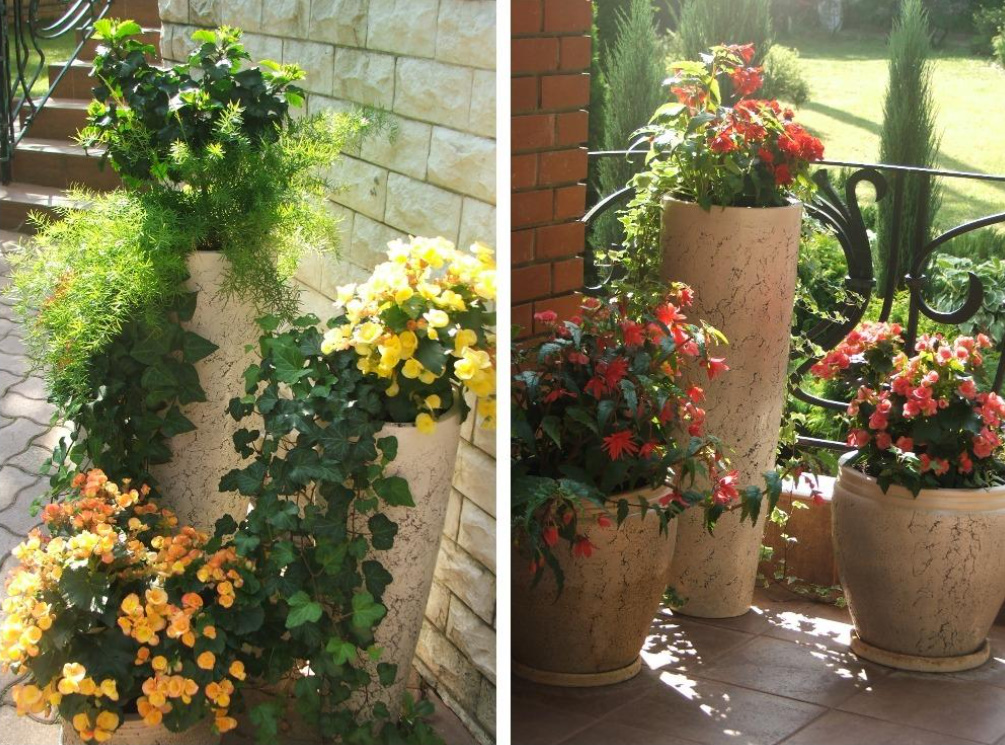
The amazing advantage of all these compositions is durability. On cool autumn days, the plants can be brought into the winter garden or just into the bright living room, because they are all used in indoor gardening, and continue to enjoy their splendor, and with the warm spring rays of the sun again settle on the patio.
